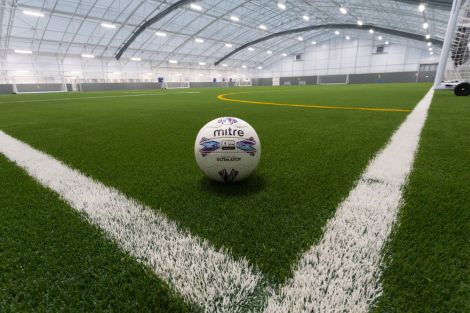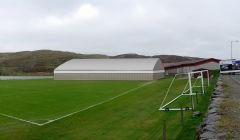Sport / Health risks of 3G pitches played down
SHETLAND Islands Council chief executive Maggie Sandison has played down new fears over the possible health risks of rubber used in some artificial playing surfaces – all while the local authority continues to look at a new 3G pitch in Lerwick.
Earlier this week a study by Stirling University suggested that crumb rubber infill on artificial 3G pitches should be replaced with alternative material due to potentially cancerous chemicals.
It also called for these types of pitches to be banned in Scotland.
It comes as the SIC continues plans for a new £1.2 million 3G pitch at the Clickimin.
It would support year-round activity in sports like football and rugby and it is said it would boost the development of sports in Shetland given that grass pitches – particularly the Clickimin’s rugby one which would be replaced by the synthetic surface – are often affected by the elements.
A sizeable chunk of the cost would be met by external funding – more than half – with the Scottish Football Association offering £500,000.
The issue of the new report on 3G pitches was raised at a meeting of the full SIC on Wednesday morning by environment and transport committee chair Moraig Lyall.
She questioned what impact this study could have on the project.
SIC chief executive Maggie Sandison said the Scottish Government was refuting the claims made in the report.
She said this position is backed up by organisations such as the Scottish Football Association.
Sandison said there was a wider view that the health benefits of activity which could be supported by these playing surfaces outweigh the potential “disbenefits” of the possible effects of the rubber.
She also highlighted this rubber is used in some existing artificial surfaces in Shetland, such as the indoor 60/40 facility at the Clickimin Leisure Complex, as well as play parks.
Become a member of Shetland News
“There’s no current recommendation for the use of any other surface,” Sandison said.
She also noted another study which is ongoing by the University of St Andrews looking at infill alternatives like cork, and suggested options could be explored in the forthcoming full business case for the 3G pitch.
Lyall said she was glad to hear the issue was being thought of but suggested the University of St Andrews study would come too late in the day.
She added it would have been unfortunate if the SIC had installed a new 3G pitch only for it to come regarded as not the best practice.
The EU has adopted ban on the sale of “intentionally added microplastics” including rubber infill from 2031 but governments closer to home have not set out a similar commitment.
Become a member of Shetland News
Shetland News is asking its many readers to consider paying for membership to get additional features and services: -
- Remove non-local ads;
- Bookmark posts to read later;
- Exclusive curated weekly newsletter;
- Hide membership messages;
- Comments open for discussion.
If you appreciate what we do and feel strongly about impartial local journalism, then please become a member of Shetland News by either making a single payment, or setting up a monthly, quarterly or yearly subscription.



































































